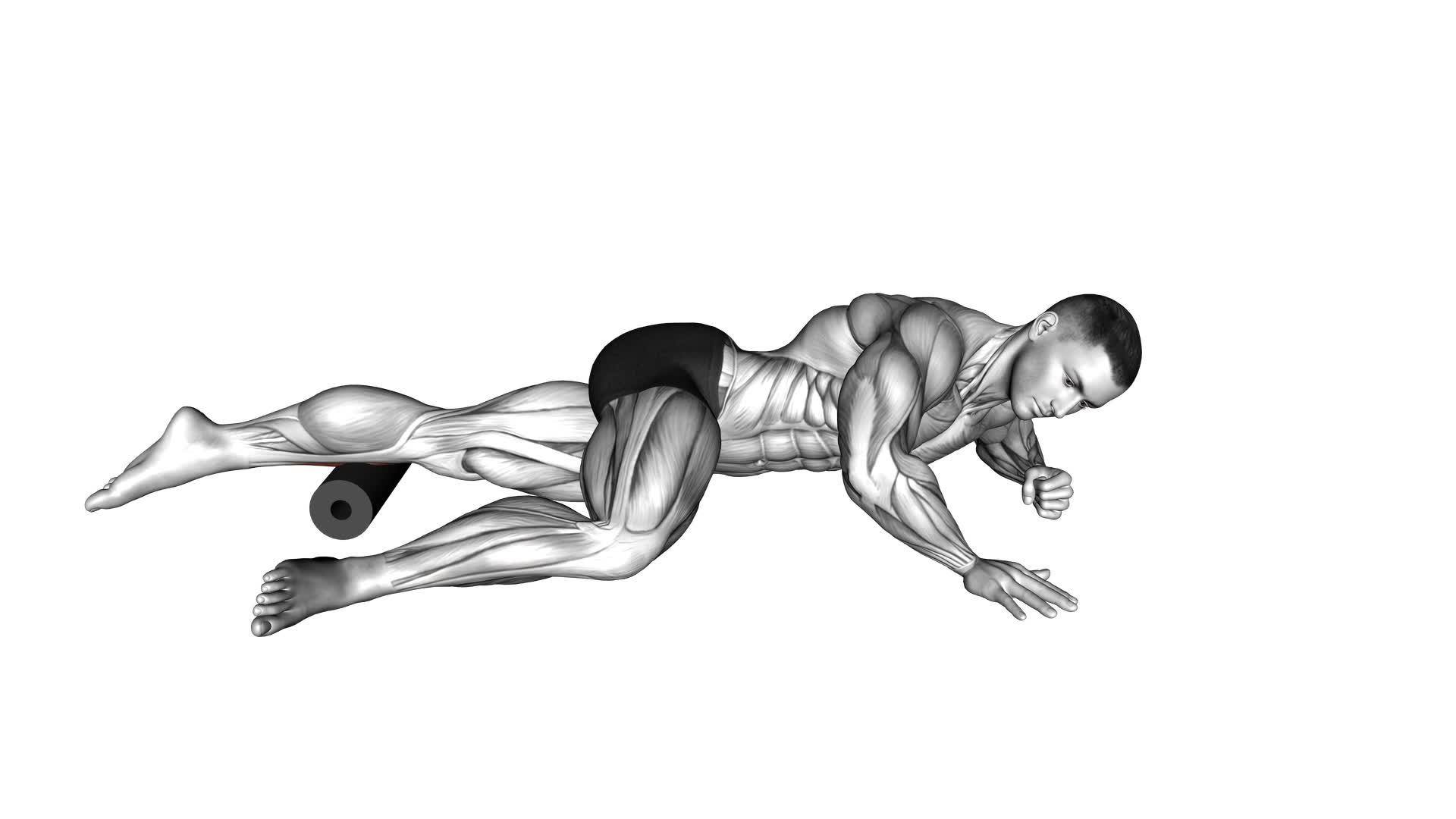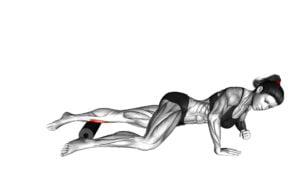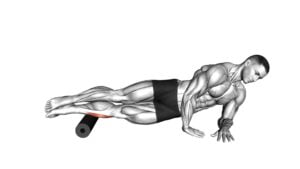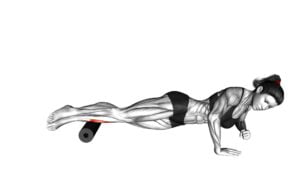Roll Peroneal (Single Leg) Side Lying on Floor – Video Exercise Guide & Tips

In this video exercise guide, you'll learn how to properly perform the Roll Peroneal (Single Leg) Side Lying on Floor. This exercise offers numerous benefits, including increased stability and strength in your legs. All you need is a comfortable floor space to get started.
Watch This Exercise Video
Follow the step-by-step instructions to ensure proper form and avoid common mistakes. Plus, we'll provide modifications and progressions to challenge yourself as you improve.
Get ready to maximize the benefits of this exercise!
Key Takeaways
- Increased stability and strength in the legs
- Activation of peroneal muscles for improved ankle stability and balance
- Prevention of ankle sprains and injuries
- Enhancement of overall athletic performance
Benefits of the Roll Peroneal Exercise
You should regularly incorporate the Roll Peroneal exercise into your workout routine to maximize its benefits. This exercise is highly effective in activating the peroneal muscles, which are located on the outside of your lower leg. By targeting these muscles, you can improve ankle stability and balance, ultimately enhancing your overall athletic performance.
The peroneal muscles play a crucial role in maintaining ankle stability and preventing ankle sprains. When these muscles are weak or inactive, it can lead to instability and an increased risk of injury. However, by regularly performing the Roll Peroneal exercise, you can strengthen and activate these muscles, providing greater support and stability to your ankles.
In addition to improving ankle stability, the Roll Peroneal exercise also helps to enhance balance. The exercise involves rolling your foot inward and outward while lying on your side, which requires precise control and coordination. By consistently practicing this exercise, you can train your body to maintain balance in various positions and movements, making you more stable on your feet.
Incorporating the Roll Peroneal exercise into your workout routine is essential for maximizing the benefits of muscle activation in the peroneal muscles and improving ankle stability and balance. By dedicating time and effort to this exercise, you can significantly enhance your athletic performance and reduce the risk of ankle injuries.
Equipment Needed for the Exercise
To properly perform the Roll Peroneal exercise, you'll need a flat surface and a comfortable mat or towel to lie on. These equipment items are essential for providing support and cushioning during the exercise. The flat surface ensures stability and reduces the risk of injury, while the mat or towel adds a layer of comfort to enhance your experience.
In addition to the basic equipment, there are variations and modifications that you can incorporate into the exercise. For instance, if you find it challenging to maintain balance in the side-lying position, you can use a wall or a sturdy object for support. This modification allows you to focus on the movement without worrying about stability.
Furthermore, if you want to increase the intensity of the exercise, you can use ankle weights or resistance bands. These additional equipment items provide resistance and engage your muscles even more, making the exercise more challenging and effective.
Now that you're aware of the equipment needed and the variations and modifications available, you're ready to move on to the next section, which will provide a step-by-step guide for proper form. By following the instructions carefully, you'll be able to perform the Roll Peroneal exercise correctly and reap its benefits.
Step-by-Step Guide for Proper Form
To ensure proper form during the Roll Peroneal exercise, begin by positioning yourself in a side-lying position on the floor. Follow these steps to perform the exercise correctly:
- Start by lying on your side with your legs extended straight and stacked on top of each other.
- Bend your bottom elbow and rest your head on your hand for support.
- Place your top hand on the floor in front of your chest to help stabilize your upper body.
- Engage your core muscles and lift your top leg off the floor, keeping it straight.
- Slowly roll onto your peroneal side, allowing your top leg to rotate inward and your foot to point toward the floor.
- Maintain control as you roll onto your back, keeping your leg elevated.
- Reverse the movement and roll back onto your side, returning to the starting position.
- Repeat the exercise for the desired number of repetitions on each side.
Remember to avoid these common mistakes in performing the Roll Peroneal exercise:
- Allowing your leg to drop or swing during the movement.
- Holding your breath instead of maintaining a proper breathing technique.
- Relying solely on momentum rather than using controlled movements.
- Failing to engage your core muscles throughout the exercise.
Common Mistakes to Avoid
Avoiding these common mistakes will help you get the most out of the Roll Peroneal exercise.
It's crucial to maintain proper technique to ensure that you're targeting the correct muscles and avoiding any potential injuries.
One common mistake isn't engaging the core muscles. Your core plays a significant role in stabilizing your body during this exercise. Ensure that you're actively contracting your abdominal muscles throughout the movement.
Another mistake to avoid is rolling too quickly or forcefully. This can lead to loss of control and potentially strain the muscles. Instead, focus on slow and controlled movements, allowing the muscles to fully engage and work.
Additionally, make sure you're properly aligned during the exercise. Keep your body in a straight line from head to toe, avoiding any twisting or tilting.
Lastly, be mindful of the position of your supporting leg. It should be bent at a 90-degree angle, with the foot firmly planted on the floor.
Modifications and Progressions
To modify or progress the Roll Peroneal exercise, you can adjust the range of motion or add resistance to challenge your muscles further. Here are some modifications and progressions you can try:
- Range of Motion: If you're a beginner or have limited mobility, you can start by performing a smaller roll by bending your knee and bringing your foot closer to your hips. As you become more comfortable and flexible, you can gradually increase the range of motion by straightening your leg and rolling further onto your foot.
- Resistance Bands: To add resistance and make the exercise more challenging, you can loop a resistance band around your ankles or thighs. This will require your muscles to work harder to control the movement and maintain stability.
- Advanced Variations: Once you've mastered the basic Roll Peroneal exercise, you can progress to more advanced variations. For example, you can try performing the exercise on an unstable surface, such as a foam pad or a balance board. This will further challenge your balance and stability muscles.
- Modifications for Beginners: If you're new to this exercise or have difficulty maintaining balance, you can use a wall or a sturdy object for support. Simply place your hand against the wall or hold onto the object while performing the roll. This will help you maintain stability and gradually build strength and control.
Remember to always listen to your body and choose modifications or progressions that are suitable for your fitness level. It's important to challenge yourself, but also to prioritize safety and proper form.
Tips for Getting the Most Out of the Exercise
To maximize your results, focus on engaging your core and maintaining proper alignment throughout the Roll Peroneal exercise. Proper breathing techniques during the exercise can help increase your stability and enhance your overall performance.
As you roll onto your side and lift your leg, inhale deeply through your nose and exhale through your mouth. This won't only provide a steady flow of oxygen to your muscles but also help you stay focused and in control.
Additionally, it's important to take precautions if you have ankle or knee injuries. Before attempting the Roll Peroneal exercise, consult with a healthcare professional or a certified fitness trainer to determine if it's safe for you. If you have any pain or discomfort during the exercise, stop immediately and seek medical advice.
When performing the exercise, make sure to keep your ankle and knee joints in a neutral position. Avoid excessive flexion or extension, as this can put unnecessary strain on these areas. Also, pay attention to your body's signals and modify the intensity or range of motion as needed. Remember, the goal is to challenge yourself without causing any harm or further injury.
Frequently Asked Questions
How Many Repetitions Should I Perform for the Roll Peroneal Exercise?
To determine the number of repetitions for the roll peroneal exercise, it's important to consider your fitness level and goals. Start with a manageable number, such as 8 to 10 repetitions per side, and gradually increase as you progress.
This exercise helps strengthen your peroneal muscles and improve ankle stability. To progress, you can add resistance bands or perform the exercise on an unstable surface.
Be mindful of common mistakes, such as using momentum instead of controlled movements and neglecting proper form.
Can the Roll Peroneal Exercise Be Done by Individuals With Ankle Injuries?
Yes, the roll peroneal exercise can be done by individuals with ankle injuries. There are variations and modifications that can be made to accommodate this. For example, you can perform the exercise with a foam roller or a towel under the ankle to provide additional support.
It's important to listen to your body and not push through any pain or discomfort. Consult with a healthcare professional or a qualified trainer for proper guidance and modifications specific to your injury.
Is It Necessary to Warm up Before Doing the Roll Peroneal Exercise?
Before diving into the details of the Roll Peroneal exercise, let's address the question at hand. Is it necessary to warm up before doing this exercise?
Absolutely! Warming up prepares your muscles and joints for the demands of the workout, reducing the risk of injury. Additionally, it increases blood flow, flexibility, and range of motion. Don't skip this crucial step!
As for common mistakes to avoid while performing the Roll Peroneal exercise, we'll discuss that next.
How Often Should I Incorporate the Roll Peroneal Exercise Into My Workout Routine?
The optimal frequency for incorporating the roll peroneal exercise into your workout routine depends on your fitness goals and current level of strength. However, it's generally recommended to perform this exercise 2-3 times per week.
As for the best time to incorporate it into your routine, it's advisable to do it after your warm-up and before your main strength training exercises. This will help activate your lateral hip muscles and improve stability during your workout.
Are There Any Specific Muscles Targeted by the Roll Peroneal Exercise?
When performing the roll peroneal exercise, you target specific muscles in your body. This exercise primarily works your peroneal muscles, which are located in your lower leg.
By engaging these muscles, you can improve ankle stability and prevent injuries. Additionally, the roll peroneal exercise also helps to strengthen your core and improve balance.
Incorporating this exercise into your routine can provide numerous benefits for your overall fitness and well-being.
Conclusion
In conclusion, the roll peroneal exercise is a beneficial and effective way to strengthen the muscles in your legs. It can be done with minimal equipment and can easily be modified to suit your fitness level. By following the step-by-step guide and avoiding common mistakes, you can ensure proper form and maximize the benefits of this exercise.
Remember to listen to your body and make any necessary progressions to challenge yourself further. Incorporate these tips to get the most out of your roll peroneal exercise and see improvements in your leg strength and stability.

Author
Years ago, the spark of my life’s passion ignited in my mind the moment I stepped into the local gym for the first time. The inaugural bead of perspiration, the initial endeavor, the very first surge of endorphins, and a sense of pride that washed over me post-workout marked the beginning of my deep-seated interest in strength sports, fitness, and sports nutrition. This very curiosity blossomed rapidly into a profound fascination, propelling me to earn a Master’s degree in Physical Education from the Academy of Physical Education in Krakow, followed by a Sports Manager diploma from the Jagiellonian University. My journey of growth led me to gain more specialized qualifications, such as being a certified personal trainer with a focus on sports dietetics, a lifeguard, and an instructor for wellness and corrective gymnastics. Theoretical knowledge paired seamlessly with practical experience, reinforcing my belief that the transformation of individuals under my guidance was also a reflection of my personal growth. This belief holds true even today. Each day, I strive to push the boundaries and explore new realms. These realms gently elevate me to greater heights. The unique combination of passion for my field and the continuous quest for growth fuels my drive to break new ground.







